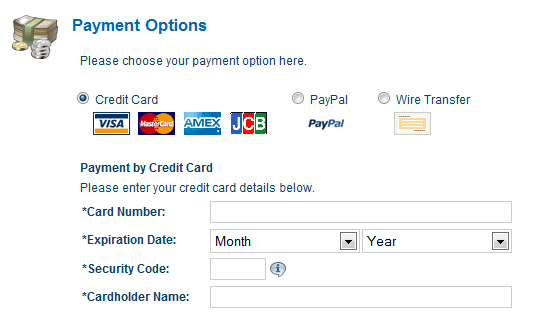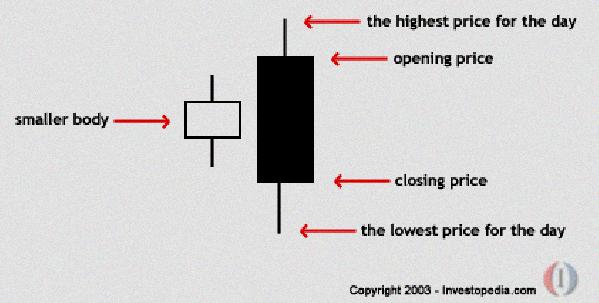Contents:


As the seller of the product or service earns the revenue by providing the goods or services, the unearned revenues account is decreased and revenues are increased . Unearned revenues are classified as current or long‐term liabilities based on when the product or service is expected to be delivered to the customer. There are a variety of types of notes payable, which vary by amounts, interest rates and other conditions, and payback periods. They are all legally binding contracts, similar to IOUs or loans. Because they are money owed by the company, both short and long-term notes payable are considered liabilities. Short-term notes payable fall under current liabilities, and long-term notes payable fall under long-term liabilities.
- As the seller of the product or service earns the revenue by providing the goods or services, the unearned revenues account is decreased and revenues are increased .
- This is a contra-liability account and is offset against the Notes Payable account on the balance sheet.
- Notes payable often represent significant borrowing for long-lived assets such as buildings, equipment, and other costly infrastructure.
- Generally, accounts payable do not require a written document or note to specify the terms and conditions.
- Learn financial statement modeling, DCF, M&A, LBO, Comps and Excel shortcuts.
When a long-term note payable has a short-term component, the amount due within the next 12 months is separately stated as a short-term liability. Both notes payable and accounts payable are considered current liabilities but both accounts differ in several ways. Both liabilities have a relative impact on an organization’s overall liquidity and as such need to be managed both responsibly and efficiently. In the promissory note, the borrower promises a certain amount of principal money plus any interest thereon at a certain date specified in the future. It is also incur interest which is treated as an expense and is listed on both profit and loss as well as cash flow statement.
Connect With a Financial Advisor
Kelly reads the documents and finds that she must pay a fixed monthly amount to the lender. She signed the agreement and received the amount instantly to book the property. Notes payable is a promissory note offered by the lender to the borrower wherein the latter is bound to pay a certain amount to the lender within a stipulated period along with interest. Leveraging financing can be an effective way of getting needed supplies and creating growth in the short term for companies that can generate revenue and adhere to repayment terms. If your company’s balance sheet is not portraying an accurate picture, you’re shooting in the dark. Notes payable are recorded and reported differently from accounts payable.

By submitting this form, you agree that Planergy may contact you occasionally via email to make you aware of Planergy products and services. Except where noted, content and user contributions on this site are licensed under CC BY-SA 4.0 with attribution required. When warranty work is performed, the estimated warranty payable is decreased. These reports are completely customisable and are synched with your accounting software. The Balance uses only high-quality sources, including peer-reviewed studies, to support the facts within our articles. Read our editorial process to learn more about how we fact-check and keep our content accurate, reliable, and trustworthy.
How to Account for Notes Payable
Long-term debt includes obligations with payment periods commonly ranging from just over 12 months up to 30 years. The amount owed on long-term financing appears under the long-term liabilities section of the balance sheet. Long-term balances often require smaller monthly outlays because the debt is spread out over time.
Notes payable make up a common category of current liabilities as shown on the balance sheet. These include debt obligations payable within a 12-month period. A note is a formal written commitment to repay debt with stated interest over a particular time frame. High levels of notes payable can restrict near-term cash flow and make it difficult to keep up with other business expenses. They present less of a long-term threat for companies that can pay the notes as they come due.
Accounts payable is usually used in companies’ day-to-day operations while notes payable is typically used for larger, long-term assets such as buildings and equipment. Accounts payable is an account that tracks a company’s obligations to pay off a short-term debt to suppliers and lenders. In this article, we’ll explain exactly what the differences between notes payable and accounts payable are and provide you with real examples of each. Notes Payable resembles any loan, which binds borrowers and lenders against payment and repayment liabilities. Notes payable are often used when a business borrows money from a lender like a bank, institution, or individual. Essentially, they’re accounting entries on a balance sheet that show a company owes money to its financiers.
The Very Good Food Company Announces Financing Transaction - Yahoo Finance
The Very Good Food Company Announces Financing Transaction.
Posted: Thu, 22 Dec 2022 08:00:00 GMT [source]
Additionally, John also agrees to pay Michelle a 15% interest rate every 2 months. Get instant access to video lessons taught by experienced investment bankers. Learn financial statement modeling, DCF, M&A, LBO, Comps and Excel shortcuts. Kerbis' practice includes business and real estate transactions, estate planning, and limited scope litigation consulting. Mathew has negotiated deals involving multinational corporate franchises and has collectively helped hundreds of clients with their transactional, civil litigation, and appellate legal needs.
How to find notes payable on a balance sheet
We will define and contrast accounting equation and notes payable and illustrate how financing strategies offer maximum growth opportunities when paired with a dynamic procurement management tool. First, let’s get a clearer understanding of the differences between AP and NP. Notes payable is a liability that results from purchases of goods and services or loans. Usually, any written instrument that includes interest is a form of long-term debt.

They are offered to a https://1investing.in/ from a lender with a written, formal agreement. The agreement stipulates that the borrower is required to pay the lender a sum of money and any acquired interest within a specified time period. A notes payable gives a bank the right to sue a borrower if they do not hold up their end of the agreement within the time allotted. The customers make the final journal entry when they repay in full.
Banks sometimes issue short-term loans or notes to businesses to help with short-term financing needs for equipment and supply purchases. This is common for newer companies that have shown the ability to generate revenue and profit but need more capital for growth and investment. Businesses also commonly purchase supplies and resale products from suppliers on account.
BILL assumes no responsibility for any inaccuracies or inconsistencies in the content. Certain links in this site connect to other websites maintained by third parties over whom BILL has no control. BILL makes no representations as to the accuracy or any other aspect of information contained in other websites. Another entry on June 30 shows interest paid during that duration to prepare company A’s semi-annual financial statement. On April 1, company A borrowed $100,000 from a bank by signing a 6-month, 6 percent interest note. Below is how the transaction will appear in company A’s accounting books on April 1, when the note was issued.
What is a Note Payable?
Notes payable is a written agreement in which a borrower promises to pay back an amount of money, usually with interest, to a lender within a certain time frame. Notes payable are recorded as short- or long-term business liabilities on the balance sheet, depending on their terms. Notes payable are oftentimes confused with accounts payable, and while they are both technically company debt, they are different categories. We can think of accounts payable as very short-term debts the company might owe as payment for goods or services from another party. They are typically paid off within the span of a month, whereas notes payable could have terms as long as several years.
Promissory Note: What It Is, Different Types, and Pros and Cons - Investopedia
Promissory Note: What It Is, Different Types, and Pros and Cons.
Posted: Sat, 25 Mar 2017 22:00:55 GMT [source]
DateAccountDebitCreditXX/XX/XXXXNotes Payable$10,000Cash$10,000Debit your Notes Payable account and debit your Cash account to show a decrease for paying back the loan. You’ve already made your original entries and are ready to pay the loan back. Receiving a significant loan from a bank or other financial institution. These items are often consumed in large quantities and cannot be purchased solely with cash due to the liquidity required, and therefore are bought using credit. INVESTMENT BANKING RESOURCESLearn the foundation of Investment banking, financial modeling, valuations and more.
- A note payable is created when a company borrows money usually from a bank or financial institution, but some other companies perform their own financing if they are large enough.
- Below is how the transaction will appear in company A’s accounting books on April 1, when the note was issued.
- Thus, the company will record a nominal Rp10 on the current liabilities section, and the rest goes to the non-current liabilities .
- Kerbis' practice includes business and real estate transactions, estate planning, and limited scope litigation consulting.
Interest expense is not debited because interest is a function of time. The discount simply represents the total potential interest expense to be incurred if the note remains' unpaid for the full 120 days. It would be inappropriate to record this transaction by debiting the Equipment account and crediting Notes Payable for $18,735 (i.e., the total amount of the cash out-flows). If neither of these amounts can be determined, the note should be recorded at its present value, using an appropriate interest rate for that type of note. Learn accounting fundamentals and how to read financial statements with CFI’s free online accounting classes. John signs the note and agrees to pay Michelle $100,000 six months later .

It’s crucial to manage accounts payable carefully because they impact an organization’s cast position, credit rating, and overall relationship with vendors or creditors. Interest rates for notes payable are determined by considering the time period given for repayment and prime rates. Prime rates are interest rates given to a bank's best customers. Once the interest rate is determined for the loan, it will be specified in the notes payable document.
While Notes Payable is a liability, Notes Receivable is an asset. Notes Receivable record the value of promissory notes that a business owns, and for that reason, they are recorded as an asset. NP is a liability which records the value of promissory notes that a business will have to pay. In addition, the interest on the note payable will need to be recorded every time interest is paid. To do this, Steve will set up an interest payable account under his current liabilities because the interest is paid short-term.
Manufacturing companies require raw materials and power during the production and manufacturing process. Many companies do not directly own the vehicles and logistic infrastructure to transport their finished goods and instead rely on service providers who already have already built such a network. The cost to license software scales quickly with the size of a business and its number of users.

No comments.